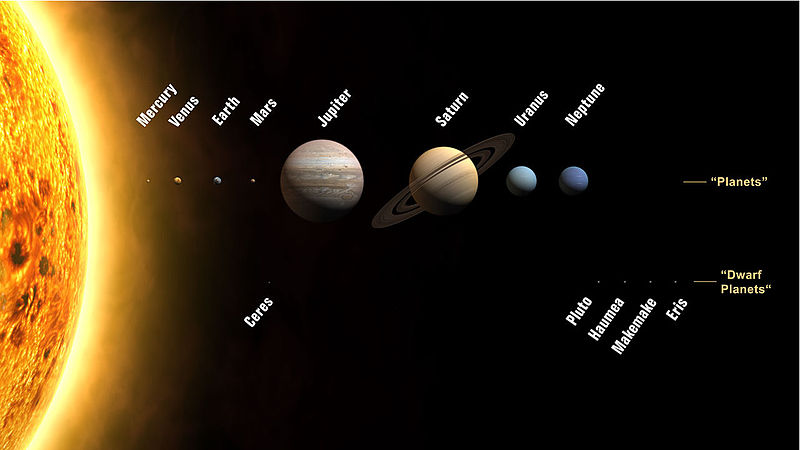earth has got 6 moons
well not quite, we only have one natural satellite, but we have 5 other "quasi-satellites" 3753_Cruithne , 54509 YORP, (85770) 1998 UP1, 2002 AA29, and 2009BD
Our Solar system is actually a Binary star
This is actually quite a contentious issue. The main evidence for the nemesis theory is the 'regular' increase of comets every 26 million years or so.
there are thirteen planetsNemesis is a hypothetical red dwarf or brown dwarf star, orbiting the Sun at a distance of about 50,000 to 100,000 AU, somewhat beyond the Oort cloud. This star was originally postulated to exist as part of a hypothesis to explain a perceived cycle of mass extinctions in the geological record.
yeah ok I'm including so-called dwarf planets ( an issue still under debate). There are probably more, and I know of at least 3 additional submissions for Dwarf planets in the Trans-Neptunian region.
Sedna and CR105 are possibly also planets, though their shape has yet to be determined ( dwarf planets are big enough to have shaped themselves into spheres, aka have achieved hydrostatic equilibrium).

there are more than 200,000 planets in our solar system!!!!!
Again not quite :p , there are however over 200,000 minor planets in our solar system.
here be centaurs !A minor planet is an astronomical object in direct orbit around the Sun that is neither a planet nor a comet.
half asteroid, half comet! Centaurs. While not the first object to be considered a centaur, 2060 Chiron is the first discovered that actually was ( confused? 944 Hidalgo was thought to be a centaur, but its not, it's just centaur-like )
lastly, though not quite a 'fact' there is a very cool free program called Celestia, its very cool!
[Edited on 8-3-2009 by verbosity]









